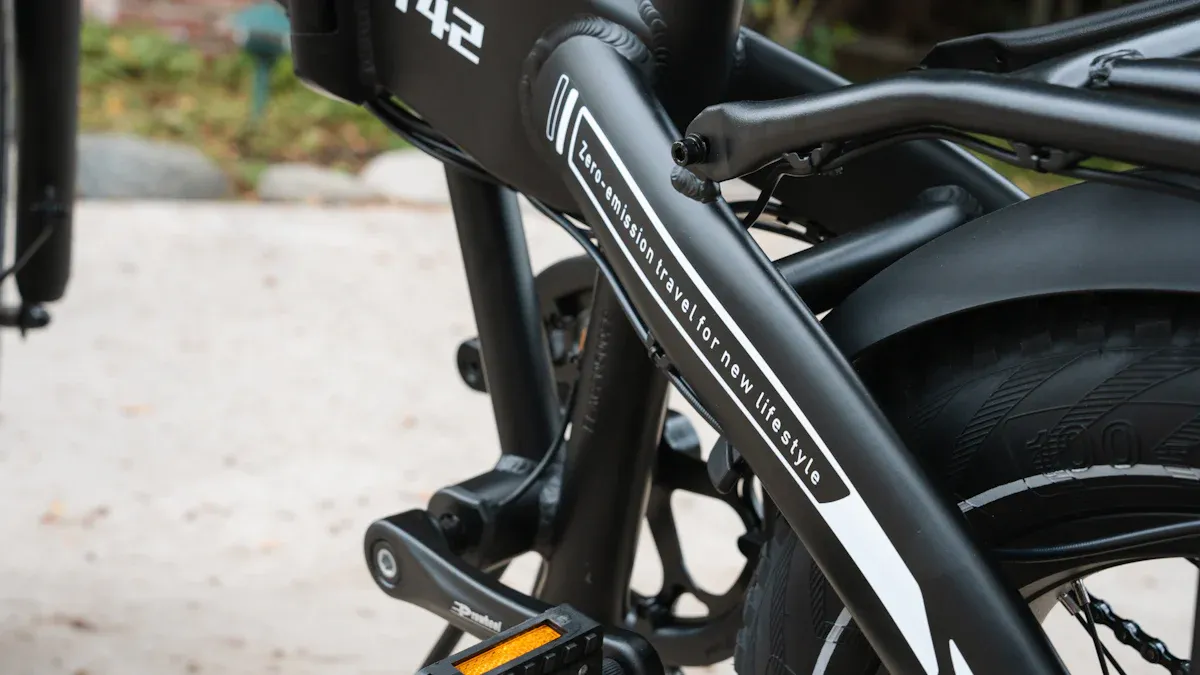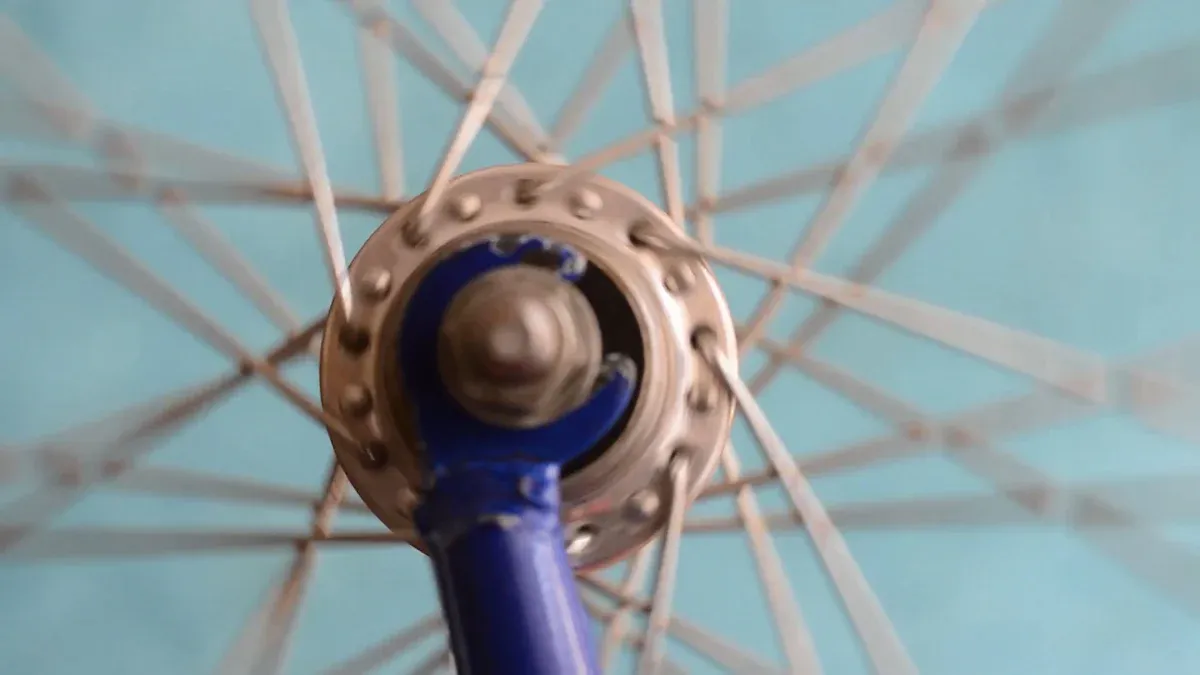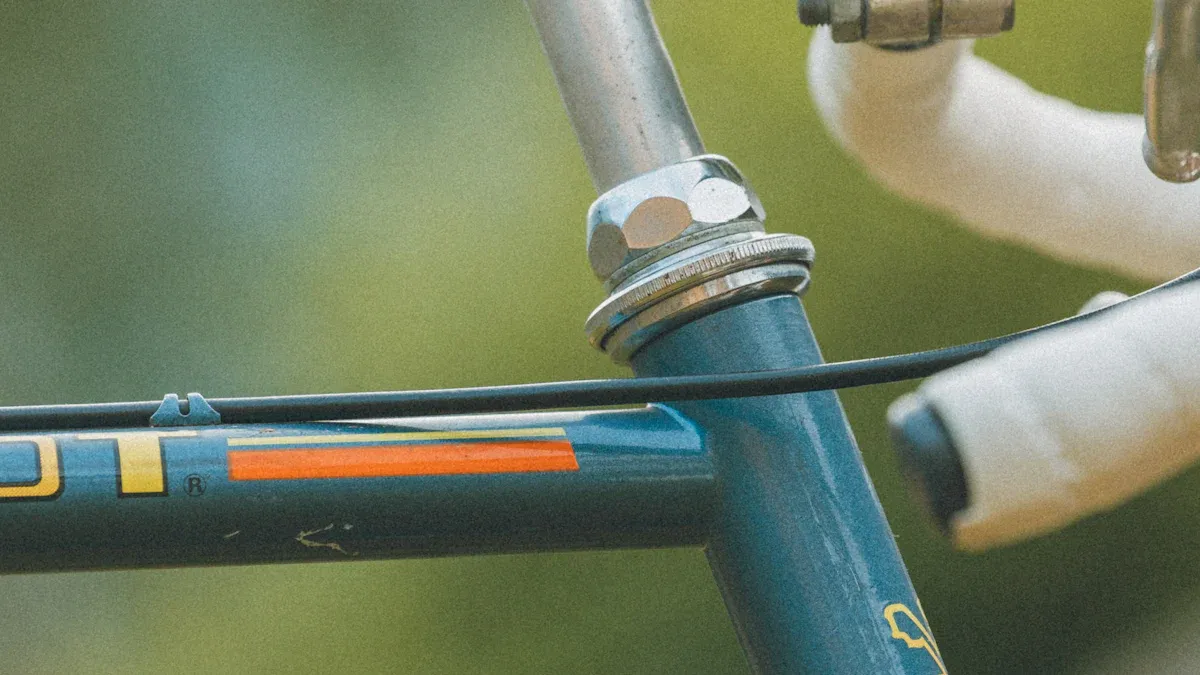
Mountain bike frame bearings are very important for your bike. They help your bike work better and last longer. These parts reduce friction. This means you can have a smooth ride on rough trails. There are different types of bearings used in biking. Some common ones are ball bearings, bushings, and hybrid ceramic bearings. Each type has special features for different biking conditions. As you read, think about these questions: What are the good and bad points of each bearing type? How do you pick the best one for your biking style?
Key Takeaways
Different types of mountain bike bearings change how well you ride. Use sealed cartridge bearings for a smooth ride and easy care.
Cup and cone bearings let you make exact adjustments but need more care. They are cheap and last long if you take care of them.
Needle bearings reduce friction and hold more weight but can break down fast if not put in right.
Bushings are simple and cheap but might wear out quicker than bearings. Think about your riding style when picking between them.
Regular care is important to make bearings last longer. Check all bearings every 100 hours to stop dirt and water damage.
Types of Mountain Bike Bearings

Cup and Cone Bearings
Cup and cone bearings are a popular choice for mountain bike frames. They have two main parts: a cup (outer race) and a cone (inner race) with ball bearings in between. This setup allows for smooth movement and even weight distribution. Here are some key features of cup and cone bearings:
They allow for exact adjustments to reduce play and improve performance.
Tapered surfaces help manage weight effectively.
Even weight distribution helps them last longer.
These bearings are often used in many bike hubs, making them a budget-friendly option. They usually cost less than sealed cartridge bearings and can be serviced, which is great for riders who like to fix their bikes. However, they need more maintenance and skill to keep them working well.
Sealed Cartridge Bearings
Sealed cartridge bearings are now the standard in modern mountain bike frames. They are complete units that need little maintenance and are easy to replace. Here are some important points about sealed cartridge bearings:
They are made to be low-maintenance and replaced as a whole unit.
These bearings usually cannot be serviced, so they are often seen as disposable.
Common materials used to make them include chromoly steel, 440C stainless steel, and XD15 nitrogen stainless steel.
Sealed cartridge bearings are very durable and protect against dirt and moisture. This makes them great for riders who face tough conditions. While they may cost more than cup and cone bearings, their low maintenance needs can make them worth it for many cyclists.
Needle Bearings
Needle bearings are not as common in mountain bike frames but can be used in specific parts, like pedals and headsets. They have long, thin rollers that give a larger surface area for weight distribution. Here are some benefits of needle bearings:
Advantage | Description |
|---|---|
Decreased Friction | Needle bearings greatly lower friction compared to bushings. |
Increased Longevity | Less friction helps them last longer. |
Greater Load Strength | They can handle up to 8 times the load compared to standard cartridge bearings. |
Larger Bearing Surfaces | This design allows for higher load support with less friction. |
While needle bearings are stable under heavy loads, they can wear out fast if not installed correctly. In high-load mountain biking, they are often replaced by multiple rows of ball bearings, which offer similar performance with better reliability.
Bushings
Bushings are another choice for mountain bike frames, especially in suspension systems. They are simple, non-moving parts that help with smooth suspension movement. Here are some important points about bushings:
They lower maintenance and warranty costs in bike shocks.
Bushings resist dirt and wear, making them durable in tough conditions.
They are cheaper and easier to replace since they have no moving parts.
However, bushings wear out faster than regular bearings and need to be replaced often. This makes them less durable over time. While they may work for some uses, riders should think about their performance needs when choosing between bushings and regular bearings.
Besides these four main types, there are special options like Enduro MAX and hybrid bearings. Enduro MAX bearings are made for mountain bike pivots and offer a 35-40% increase in load capacity compared to standard radial bearings. Hybrid bearings mix ceramic and steel materials for better performance and durability.
Knowing the different types of mountain bike frame bearings helps you make smart choices about your bike’s performance and care. Each type has its own pros and cons, so think about your riding style and conditions when picking the right bearings for you.
Advantages and Disadvantages of Each Bearing Type
Pros and Cons of Cup and Cone Bearings
Cup and cone bearings have many good points for mountain bikers. They are known for their durability and often last longer than the bike frames. Here are some benefits:
Exceptional Durability: These bearings can last a long time before needing care.
Easy Maintenance: You can fix cup and cone systems easily compared to sealed cartridge bearings.
Cost-Effective: They usually cost less than other types of bearings.
But, cup and cone bearings also have some downsides. They can let dirt and water in. This means you need to take care of them more often than sealed cartridge bearings. If you don’t keep up with this care, you might have problems with how they work.
Pros and Cons of Sealed Cartridge Bearings
Sealed cartridge bearings are now the standard in modern mountain biking. Their main benefits include:
Low Maintenance: You can change these bearings as a whole unit, saving time and effort.
Durability: Many users say they show little wear even after years of use, proving they are reliable.
Effective Sealing: The seals keep out dirt and water, helping them last longer and work better.
Even with these benefits, sealed cartridge bearings have some issues. They can be hard to fix because you can’t take them apart. Also, the seals might not stop all water and dirt from getting in, which can cause problems. Some users have noticed that the inside parts can get damaged or rusty.
Pros and Cons of Needle Bearings
Needle bearings are not very common in mountain bike frames but can be useful in certain parts. Here are their advantages:
Advantage | Description |
|---|---|
Lightweight | Needle bearings are much lighter than metal ones, which helps reduce strain on the frame. |
Maintenance-free | They don’t need lubrication, making care easier and improving durability. |
Resistance to dirt and moisture | Needle bearings are less affected by dirt and water, which helps prevent rust. |
Better shock absorption | Their design helps reduce vibrations, making rides more comfortable. |
However, needle bearings have some limits. They are not very common in bikes and can be tricky to fit into mountain bike frames. If they are not put in correctly, they can wear out quickly. Designers often choose multiple rows of ball bearings for similar performance, making needle bearings less popular.
Pros and Cons of Bushings
Bushings are a simple choice for mountain bike frames, especially in suspension systems. Their advantages include:
Advantage | Description |
|---|---|
Load Distribution | Bushings spread the load over a larger area, which helps prevent indentations. |
Cost-Effectiveness | They are cheaper than other options like bearings. |
Lightweight | Bushings have fewer moving parts, making them lighter and simpler for some uses. |
Suitability for Limited Rotation | They work well for short-link suspension bikes with heavy loads, where bushings do better than bearings. |
On the downside, bushings can get dirty and stick, causing performance problems. They are not as smooth as bearings, leading to less fluid movement. Bushings need specific tolerances to work right, making installation and care harder. Some users think bushings are cheap and not as effective as bearings, resulting in a less comfortable ride.
Knowing the pros and cons of each type of mountain bike frame bearing helps you make smart choices about your bike’s performance and care. Each type has special features that fit different riding styles and conditions.
Performance Considerations for Mountain Bike Frame Bearings

Impact on Ride Quality
The kind of mountain bike frame bearings you pick really changes how your ride feels. Different types of bearings affect friction, which changes how smoothly your bike moves. For example, sealed cartridge bearings lower resistance, making your ride smoother and more responsive. They also help spread weight evenly, so your bike works well in different situations. In contrast, cup and cone bearings let you make exact adjustments, which can boost performance but need more care.
Maintenance and Durability
Taking care of your bearings is very important for them to last long. Regular bearing maintenance stops problems caused by dirt and water. Here’s a quick look at when to do maintenance:
Component | Maintenance Interval |
|---|---|
All bearings | |
Forks and Shocks | Basic service at 50 hours, full service at 200 hours |
Pivots | Check and likely replace annually |
The strength of each bearing type is different. Sealed cartridge bearings are known for being tough because they keep out dirt. However, cup and cone bearings can last longer if you take care of them well. Dirt and water can cause bearings to fail, so checking them after rides in rough conditions is very important.
Weight and Efficiency
Weight is very important for how well your bike works. Lighter bearings, like needle bearings, lessen the strain on the frame, improving overall performance. Plus, high-quality bearings have low rolling resistance, which helps with power transfer. This means you can go faster with less effort.
In conclusion, knowing the different types of mountain bike frame bearings is very important for getting the best performance from your bike. You learned about cup and cone bearings, sealed cartridge bearings, needle bearings, and bushings. Each type has its own special features.
When picking the right bearing for you, think about these things:
High-Quality Bearing Materials: Choose stainless steel to resist rust or ceramic for less friction.
Sealing and Protection: Look for bearings with good seals to keep out dirt and water.
By thinking about your riding style and conditions, you can make smart choices. Whether you need a bicycle hub overhaul or just want to improve your ride, choosing the right bearing will make your biking experience better.
FAQ
What are the signs that my bike bearings need replacement?
You may notice unusual noises, rough movement, or play in the hub. If your bike feels sluggish or you see rust, it’s time to check your bearings.
How often should I maintain my mountain bike bearings?
You should service your bearings every 100 hours of riding. For forks and shocks, perform basic maintenance every 50 hours and a full service every 200 hours.
Can I replace my bearings myself?
Yes, you can replace your bearings if you have the right tools and knowledge. Follow your bike’s manual for guidance, especially for the hub.
What type of bearings is best for my riding style?
If you ride in harsh conditions, sealed cartridge bearings are ideal. For those who prefer to maintain their bike, cup and cone bearings offer adjustability and durability.
How do I clean my bike bearings?
To clean your bearings, remove them from the hub. Use a degreaser to clean the surfaces, then re-grease before reassembly. Ensure everything is dry before putting them back.
See Also
Understanding The Differences Between Fat And Mountain Bike Frames
A Comprehensive Guide To Bike Frame Components And Functions
The Physics Of Compliance In Mountain Bike Frame Design
Key Factors To Evaluate When Selecting An E-Mountain Bike Frame
Hardtail Vs Full Suspension Mountain Bike Frames: Essential Insights
